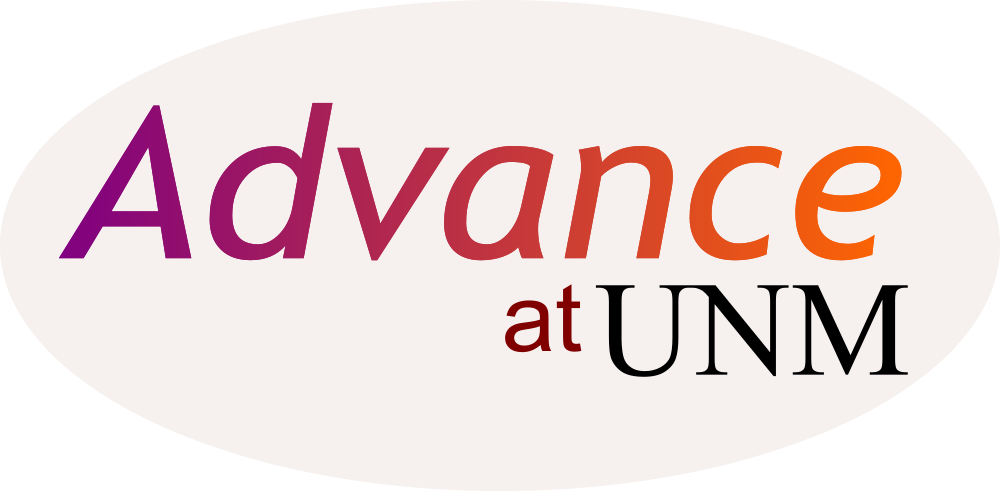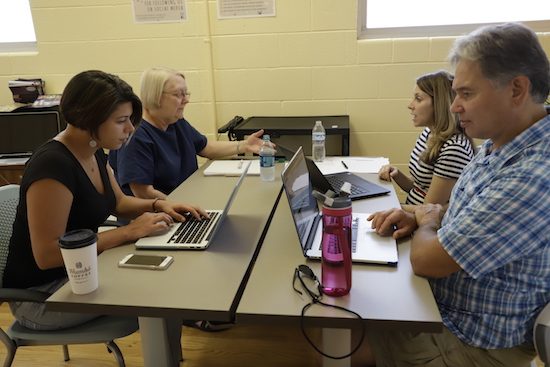Advance at UNM Social Sciences Research Team analyzing campus climate data
Researchers at the University of New Mexico are hoping to better understand the campus climate for underrepresented minority and white women faculty in STEM fields and across the university as part of a five-year National Science Foundation grant.
As part of their research to gauge general campus climate and support for diversity at UNM, members of the Advance at UNM social science research team are carrying out qualitative and quantitative survey analyses. For example, one group has interviewed 55 junior faculty members, seven members of UNM leadership and 15 people who have left UNM.
Professor Steven Verney, Advance Co-PI Dr. Felipe Gonzales, and graduate students Charlie Christian and Karly Edwards, are analyzing the interviews for themes that arise within particular groups and across groups. The interviews intend to get a different point of view on diversity and inclusion within the different levels of faculty at UNM. Junior faculty interviews, which are still ongoing, were used to gauge their experience at UNM. The team also is conducting faculty exit interviews, which are being used to discuss individual experiences of faculty who have left UNM.
These interviews were university-wide and do not only pertain to STEM departments. Deans, associate provosts, the provost and the former president of the university were all interviewed to ascertain how they could play an important role in increasing the diversity of the university. Next up for the team’s work is “analyzing and writing up both the junior faculty interview project, as well as the leadership interview project… in the upcoming fall semester. We also plan to present the information we find to the upper administration in the hopes of instituting some policy changes to better support campus climate and junior faculty,” Edwards said.
Members of the team are also analyzing climate survey data collected from faculty in the first year of the NSF-funded program. Three professors — Drs. Lisa Marchiondo, Kamilla Venner and Steve Verney – are examining three major issues as part of the project, with advice from Professor Abigail Stewart from the University of Michigan.
The first study examines how the climate at UNM is different for underrepresented minority faculty compared to majority faculty on campus across all fields, and what policies and practices are associated with better versus worse experiences. The second considers how the climate is different for women and men faculty in STEM and non-STEM fields, as well as which policies and practices are associated with better or worse experiences. Finally, the third examines how faculty attitudes about diversity are affected by the diversity attitudes of the leaders to whom they report.
Members of the team plan to publish three papers that will contribute to social scientific understanding of the important predictors and consequences of features of the work environment. The papers should also help UNM faculty and leaders identify potential ways to improve the environment for all faculty.
Gonzales, a sociology professor, said the faculty climate survey “intended to get the viewpoints of various sectors on how things look currently at UNM based on their individual experiences. It is important to interview all areas at UNM, not just STEM, because different sectors bring up different problems.”
With the data collected from the interviews and the survey, Advance Deputy Director Dr. Mala Htun and former Advance Program Manager Brittany Ortiz published an article “Who Wants to Hire a More Diverse Faculty? A Conjoint Analysis of Faculty and Student Preferences for Gender and Racial/Ethnic Diversity,” in July 2017 in conjunction with faculty from Dartmouth College and University of Nevada. The authors found that, in general, faculty support diversity initiatives at the University and are more inclined to hire people of color. Yet, UNM’s campus may still be less diverse than it could be because of what the authors found to be implicit and institutionalized biases that may affect many faculty members without them even realizing it. Read the article here.

